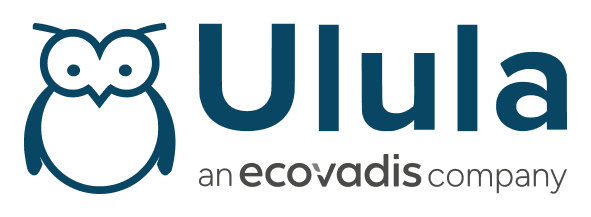The updated drafts of the European Financial Reporting Advisory Group’s (EFRAG) European Sustainability Reporting Standards (ESRS) are in.
The new standards will instruct companies how to fulfill the reporting requirements of the Corporate Sustainability Reporting Directive. Alongside the Corporate Sustainability Due Diligence Act, the Directive will ensure that companies and regulators are speaking the same language through regulatory harmony and standardized disclosures. The wording of the ESRS are indicative of what the future of value chain human rights due diligence (HRDD) will look like, and companies ought to take note.
Reporting cycles will begin from 2024, so companies would do well to spend 2023 making their policies and processes compliant. The European Commission is expected to adopt the first set of standards in June 2023. Sector-specific and small enterprise standards are due in June 2024.
The ESRS raise the bar for data transparency, quality, and comparability. Companies will be expected to institute and report on policies that have worker and community engagement at their core. Companies who don’t update their human rights and social impact policies accordingly risk being left behind. But just because companies are being told what to look for, doesn’t mean they’ll be able to find it. Without the right tools, measuring social impact is hard work, which undermines the process of accountability.
The ESRS is a continuation of the move towards implementation, and away from policy box-checking. To help companies prepare, we’ll explain how worker engagement technology can help measure your social and human rights impacts and meet ESRS reporting requirements in four steps.
1. Disclosure: Know Your Social Impact Responsibilities
The ESRS S2 requires companies to describe “policies that address the management of its material impacts on value chain workers, as well as associated material risks and opportunities.” The ESRS S3 extends this requirement to cover affected local communities. For companies to fully understand the material impacts of their activities on value chain workers and their communities, they need to have policies in place that allow them to communicate with workers directly, and utilize their insights.
Digital stakeholder engagement platforms can facilitate two-way dialogue between companies and value chain workers. HRDD monitoring and mitigation tools, like surveys, grievance mechanisms, remediation solutions, reporting and alerts of grievances are getting a digital makeover.
Ulula’s two-way grievance mechanism allows companies to proactively identify and manage impacts on value chain workers and communities and to gather data on impacts. Including stakeholder views in data collection allows companies to better disclose “whether and how perspectives of value chain workers are taken into account in the decision-making processes of the undertaking”. Under the ESRS, soliciting the views of value chain workers and assessing risks and opportunities of your business actions go hand in hand.
2. Scope: Scale up for Complete Coverage
The ESRS S2 and S3 sections outline that disclosures must include workers outside of a company’s “own workforce” (see Appendix B, AR.2 for a detailed description of the types of workers companies need to include.) This means that companies that sit upstream will need solutions that go all the way downstream in the value chain, so scalability is crucial. Analogue modes of communication with value chain workers like hotlines and in-person audits could leave your ESRS report card without a passing grade. Scalable, digital solutions make it easier for companies to access the remotest corners of the value chain.
Ulula’s platform works in the apps workers already use, so can be tailored to the technological circumstances of different workforces and scaled up accordingly. It democratizes access to engagement solutions by opening up accessible communications channels for workers.
Companies also need to measure and disclose the availability of engagement channels for “workers that may be particularly vulnerable to impacts and/or marginalized”, including migrants, women and disabled workers. Digital platforms allow companies to give voice to vulnerable workers. Auto-translate and multilingual communication channels mean migrant workers can communicate with representatives directly while remaining anonymous, without fear of reprisals.
In communities where the workforce consists primarily of migrants it can be difficult to organize local representatives. Providing a tailored, linguistically and technologically flexible solution satisfies a major requirement of the ESRS by facilitating worker participation
3. Foster Continuous and Consistent Stakeholder Engagement
The ESRS clarifies the detail and depth of disclosures on stakeholder engagement that’s expected of companies. Companies must disclose “the stage(s) at which engagement occurs, the type of engagement, and the frequency of the engagement”. Ulula addresses this need with a platform that can record anonymised and aggregated metrics on grievance type, location, date, priority and worker background. Approved third parties can also access case data, facilitating community led collaborative working approaches.
A holistic social impact risk management system enables continuous monitoring of risks in the value chain. Infrequent audits can leave companies exposed to reputational risk. Modern tools for communicating with value chain workers supported by aggregated reports give companies clear, up to date information on social impact that can enhance disclosures.
4. Measure Impact: See the Forest for the Trees
In order to disclose their social impact, companies will need to ensure worker engagement is measurable, which means they will need robust means of collecting data on worker impact. Without this information, companies may have a hard time disclosing “whether and how the undertaking assesses that remediation is effective”. Efforts to monitor, mitigate and remediate worker impact will have to be disclosed, as well as tracking and assessing the metric of “delivering intended outcomes” for value chain workers.
Deliverables are one of the most difficult to measure aspects of the Standard because of the scope and remoteness of many value chains, particularly in the social impact space. While the CSRD only covers reporting obligations, the wording makes the direction of travel for HRDD implementation clear. Companies that do not put effective HRDD processes in place are at risk of being left behind by regulators and investors. With the move towards mandatory HRDD laws accelerating, companies must go digital to keep pace.

